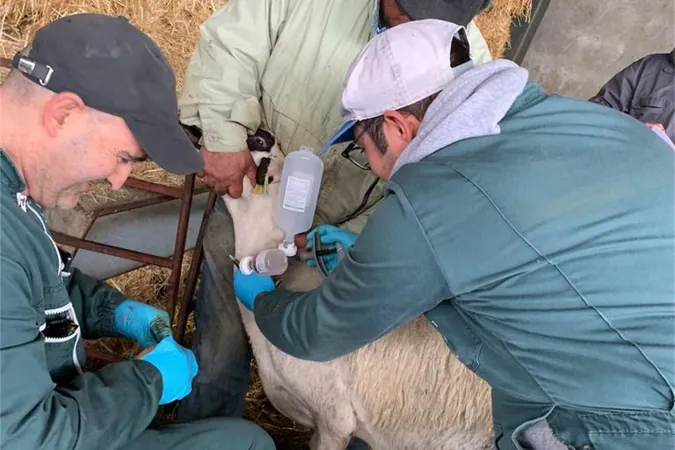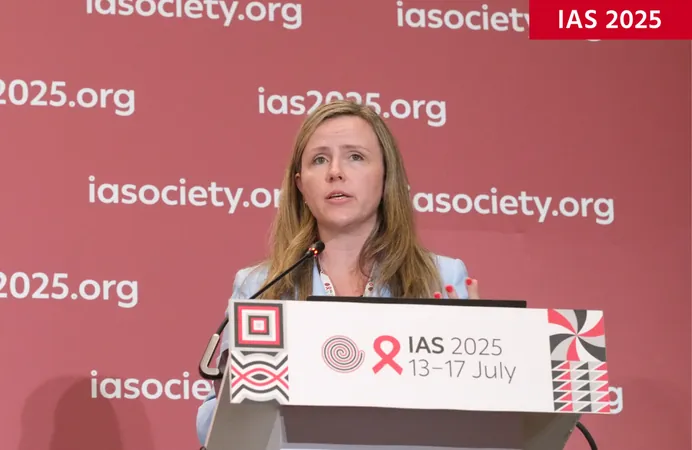
Why Animal Health is Key to Preventing the Next Pandemic
2025-07-02
Author: Jia
A Call to Action: Integrating Animal Health into Pandemic Strategies
As the world grapples with health security, the European Union's Health Emergency Preparedness and Response Authority (DG HERA) is proactively collaborating with countries to bolster defenses against serious health threats. A pivotal development in this arena is the recent WHO Pandemic Agreement, which aims to fortify global health structures for future emergencies.
However, there's an often-overlooked factor in these preparations: animal health. Historically, future pandemics may very well begin in the animal kingdom, underscoring the urgent need to integrate animal health into our pandemic response frameworks.
What is Disease X and Why Should We Care?
In 2018, the WHO introduced the term "Disease X" to represent an unknown pathogen capable of igniting a global epidemic. Although hypothetical, Disease X is a stark reminder that most pandemics originate from animals— zoonotic diseases like SARS, MERS, and the recent COVID-19 exemplify this reality. With this knowledge, animal health emerges as a frontline defense against potential outbreaks.
The One Health Approach: A Game Changer
The WHO Pandemic Agreement signifies a groundbreaking shift toward an integrated health approach, recognizing the interdependence of human, animal, and environmental health. The animal health sector sits in a prime position to help materialize these ambitions through coordinated efforts.
By addressing diseases at their source—within livestock and wildlife—we can effectively halt their transmission to humans. By focusing on early detection and management, we can prevent outbreaks before they escalate into crises.
A Stark Need for Robust Surveillance
A recent report from the World Organisation for Animal Health (WOAH) reveals alarming trends: animal diseases are infiltrating new regions, and a staggering 47% of these diseases demonstrate zoonotic potential. Between 2005 and 2023, a staggering 68% of emerging disease notifications to WOAH were also zoonotic.
The recent surge in avian influenza cases among mammals is a pressing example. This uptick not only endangers wildlife but raises the risk of transmission to humans, highlighting the importance of a vigilant animal health sector.
Investing in Animal Health: A Necessity, Not a Luxury
Lowering the prevalence of animal diseases is essential to curbing zoonotic risks. Investments in surveillance, veterinary care, and vaccine research must occur before pathogens reach human populations. Unfortunately, chronic underfunding in animal health systems persists, especially in developing nations—leaving gaps in our pandemic readiness.
Closing the Gaps: A Collaborative Approach
To establish resilient health systems, the global community must prioritize animal health. This means channeling resources towards joint training for healthcare professionals across disciplines and fostering integrated disease surveillance mechanisms. The WHO's framework encourages international collaboration to bridge the divide between human and animal health sectors.
Future Challenges and the Need for Dialogue
While the WHO Pandemic Agreement charts a new course, the real challenge lies in transforming these policies into practice. Decision-makers need to firmly incorporate veterinary services into pandemic preparedness plans and ensure that veterinarians have a seat at the table before crises emerge.
The journey toward preventing future pandemics starts not just in hospitals, but also through farms, ecosystems, and veterinary clinics. Acknowledging that animal health is an integral part of public health is vital for mitigating the threats of tomorrow.
Conclusion: Strengthening Animal Health for a Safer Future
In summary, enhancing animal health systems is critical to reducing risks associated with pandemics. The world needs to embrace the One Health perspective, ensuring our strategies are informed by science and real-world experiences. Only then can we aim to safeguard our health from future outbreaks.


 Brasil (PT)
Brasil (PT)
 Canada (EN)
Canada (EN)
 Chile (ES)
Chile (ES)
 Česko (CS)
Česko (CS)
 대한민국 (KO)
대한민국 (KO)
 España (ES)
España (ES)
 France (FR)
France (FR)
 Hong Kong (EN)
Hong Kong (EN)
 Italia (IT)
Italia (IT)
 日本 (JA)
日本 (JA)
 Magyarország (HU)
Magyarország (HU)
 Norge (NO)
Norge (NO)
 Polska (PL)
Polska (PL)
 Schweiz (DE)
Schweiz (DE)
 Singapore (EN)
Singapore (EN)
 Sverige (SV)
Sverige (SV)
 Suomi (FI)
Suomi (FI)
 Türkiye (TR)
Türkiye (TR)
 الإمارات العربية المتحدة (AR)
الإمارات العربية المتحدة (AR)